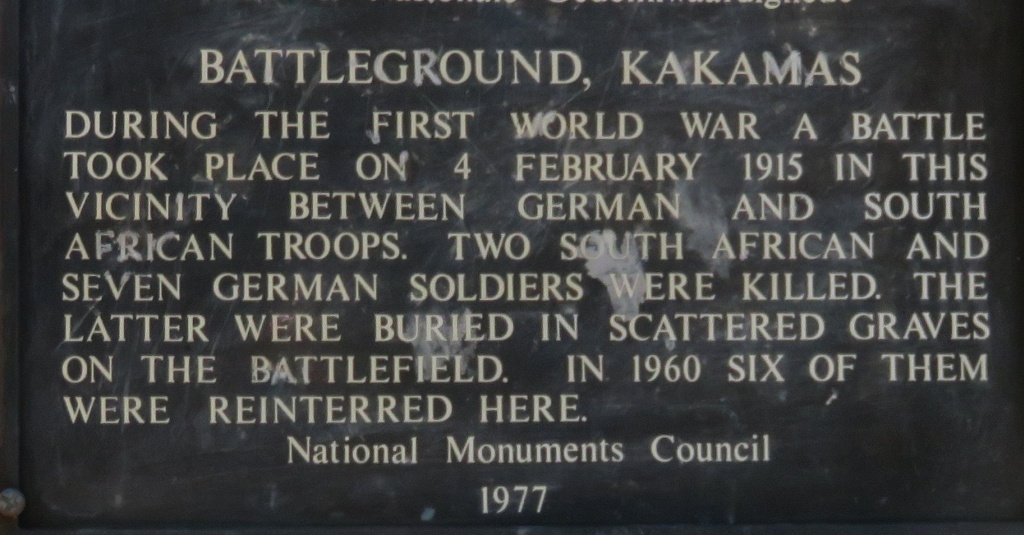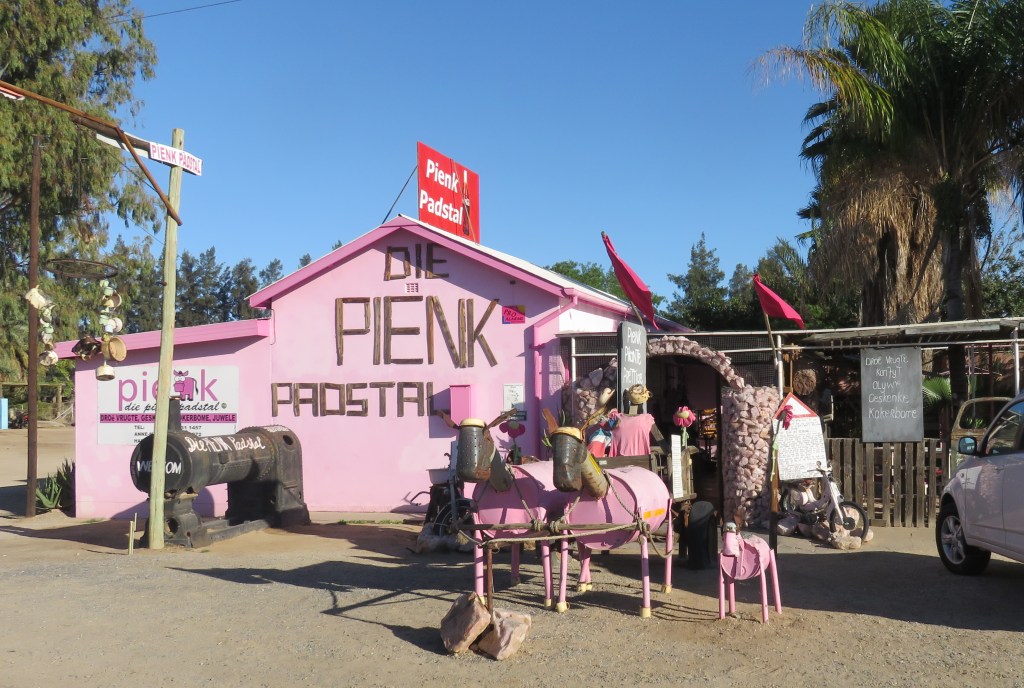
Kakamas
A small town on the Orange River in the Northern Cape. On the road to Springbok on the N14 80 km to the west of Upington. The turn-off to Augrabies is just outside of town. Geographic position: 28.77°S, 20.6166°E and 661m altitude.
History-how did it come about
It started with the NG church late in the 19th century wanting to do something about 'poor whites'. One idea was to find irrigation land that could be developed. The Cape government got involved and allocated a number of farms on the Orange River for that purpose, on which a labour colony could be established.
The first settlers arrived in June 1898 and work on the first furrow was started under the direction of the pioneer missionary C.W.H.Schröder. Is this the same Schröder that started the mission station in Pofadder in 1875? Work was interrupted during the Boer War and restarted in 1906. A village as such did not exist then, residential plots were laid out in 1930 and a definite village developed.
 Administration was initially under the Labour Colony Commission of the NG church, which eventually evolved to a Village Management Board in 1948 and full municipal status in 1964.
Administration was initially under the Labour Colony Commission of the NG church, which eventually evolved to a Village Management Board in 1948 and full municipal status in 1964.
The origin of the name is uncertain, Ref 1 lists the possibilities.
NG church
The NG congregation Kakamas was established 1911. And the corner stone of the church was laidon the 7 Feb 1920. A very majestic building, very pleasing to the eye.
German war graves

 When I first read about German war graves in South Africa I just had to find out what this is all about. Who were these country men of mine who lost their lives fighting in South Africa and why.
When I first read about German war graves in South Africa I just had to find out what this is all about. Who were these country men of mine who lost their lives fighting in South Africa and why.
The story is actually engraved at the site. Here is a a bit more about it. At the beginning of the First World War, when the Union of South Africa was drawn into the war through being part of the British Empire, it was expected of the South African forces to move into German South West Africa. The Schutztruppe, as a result of this, came over the border south to block the fords over the Orange River. Thus blocking the route into South West Africa. The fighting that ensued cost the lives of seven members of the Schutztruppe and two on the South African side. The end result was that the Germans got pushed back and did not succeed in their effort. The South Africans are buried at the NG cemetery in Kakamas.
The memorial stone reads as follows:
Im Gedenken an die Gefallenen des (in memory of the fallen soldiers of the)
Gefechtes bei Kakamas am 4.Februar 1915`(battle at Kakamas 4.Feb.1915)
Lt Hans von Wegnern ★ 5.3.1890
Lt Hermann Moebus ★ 13.2.1889
Uffc D.R.Paul Rafalski ★ 23*3*1894
Gefr. Karl Lattner ★ 6.3.1895
Gei RL Karl Dfmitrowitz ★ 18.10.1892
Reiter Hendrik Lerm ★ 19.12.1895
and below
Lt. d. Res.
Otto Voigts
Geb. 4.1.1881
Gef. 4.2.1915 Kakamas
Überführt nach Windhuk
Mai 1916
 The titles give me a bit of a headache, not being familiar with military ranks, let's try anyway: Lt is a Leutnant lieutenant, Uffc Unteroffizier is a corporal, Gefr Gefreiter lance corporal, Gei don't know, Reiter rider, Lt.d.Res. Leutnant der Reserve lieutenant of the reserve. And what it says at the bottom is that his remains, that of Otto Voigts, were re interned to Windhoek in May 1916.
The titles give me a bit of a headache, not being familiar with military ranks, let's try anyway: Lt is a Leutnant lieutenant, Uffc Unteroffizier is a corporal, Gefr Gefreiter lance corporal, Gei don't know, Reiter rider, Lt.d.Res. Leutnant der Reserve lieutenant of the reserve. And what it says at the bottom is that his remains, that of Otto Voigts, were re interned to Windhoek in May 1916.
The memorial is surrounded by a big fence, which is a pity, but I can also understand the reason. Fortunately somebody before us has cut the fence and it is thus possible to have a close look.
The Pink Shop
 The Pink Shop, or officially called 'Die Pienk Padstall', is a landmark in Kakamas and I had to include it in this page. Situated at the entrance to town, on the right hand side as one comes over the bridge of the Orange. It is mainly directed at tourists passing through, stocking dried fruits, jams, olives, gifts and quiver trees, this is according to the sign outside. Inside one finds even more of a selection, books, food, clothing and other things.
The Pink Shop, or officially called 'Die Pienk Padstall', is a landmark in Kakamas and I had to include it in this page. Situated at the entrance to town, on the right hand side as one comes over the bridge of the Orange. It is mainly directed at tourists passing through, stocking dried fruits, jams, olives, gifts and quiver trees, this is according to the sign outside. Inside one finds even more of a selection, books, food, clothing and other things.
There are a few things I have missed, I hope there will be a next time. We never went to the railway station, I think its still in use and the Kakamas cemetery which contains some graves from the Kakamas battle.
Reference:
Ref 1.: Standard Encyclopedia of Southern Africa, Nasou Limited, 1974